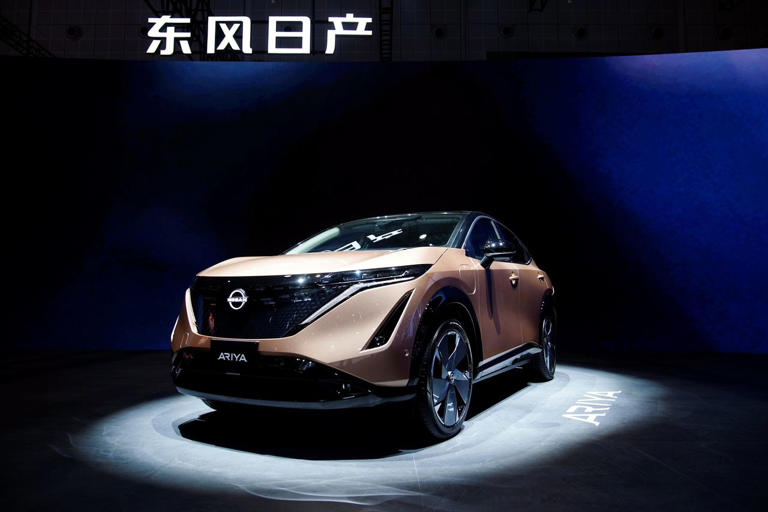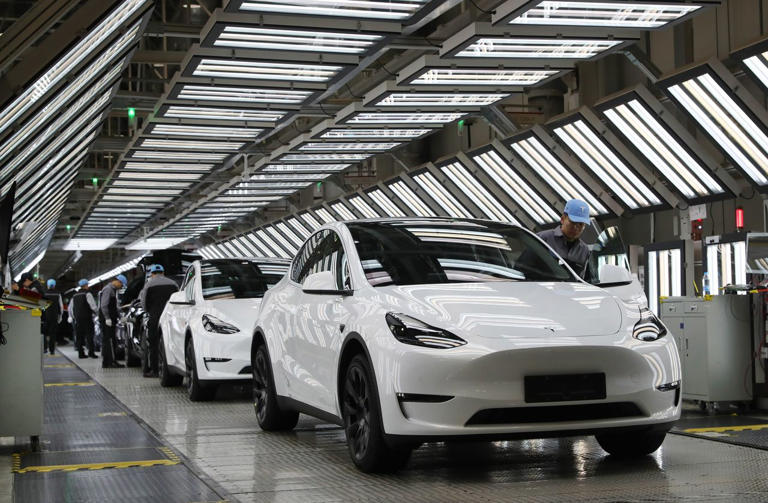黄油油的闲话
油油腻腻的二话其实一直是个争论的话题哈,就是某天世界上只有两个国家,一个叫中国,还有一个叫外国。
酱紫好不好,待争论哈。但是现在连《华尔街日报》都不得不承认这个事实,就是起码在电动汽车这个领域,世界已经成为两个:一个叫中国,一个叫不是。不是还剩下有多大,就看中国的发展了。
不过呢,打不过,就加入!所以尼桑也学的有模有样,学起了特斯拉和福特,在中国生产,然后出口到“不是”世界。
黑子们还在拼命黑特斯拉,没想过这是那个“不是”世界里最后的一块遮羞布了,还继续黑蛙?
电动汽车将汽车世界一分为二:要么中国制造,要么不是
The Wall Street Journal
EVs Are Splitting the Auto World Into Two: Made in China, or Not
BEIJING—The rise of electric vehicles is dividing the global auto market into two: one that welcomes China-made cars, and the other that effectively rejects them.
Last spring, a group of Nissan executives huddled at the company’s headquarters in Yokohama, Japan, staring at a world map.
The map color-coded the world in four: red, for countries that block vehicle exports from China; yellow, for countries that risk halting them in the future; gray, for countries that might place some restrictions in the future; and green, for countries without restrictions or such likelihood.
The exercise was designed to find out whether Nissan had a shot at exporting cars it made in China, including electric vehicles, even as geopolitical tensions grow. The executives found that roughly 60% of the countries fell under what the company assessed as “green” or “gray.” Including the “yellow” countries, the tally was higher.
“When you look at the map, you can see that 80% of the market has an environment in which it could accept” China-made cars, said Masashi Matsuyama, who heads Nissan’s China investment unit. Nissan declined to say which countries fell under which color category.
Nissan decided to give its export plan a go. In November, the automaker said it would start shipping vehicles from China in 2025, including electric and plug-in hybrids—though it has yet to disclose the exact destinations of those cars.
Nissan is in good company: Ford, Tesla and BYD have all been increasing exports from China. Their moves underscore how geopolitics is reshaping the car industry, driving carmakers to update their strategies for where they make and sell cars.
The schism in the global auto sector follows similar splits in areas such as the telecom industry and the internet as the world becomes increasingly polarized around the top two economic powers.
More global carmakers are considering increasing exports from China—where cars, and especially EVs, are typically cheaper to make—but only to select destinations. Few are likely to end up on the U.S. market, but places such as Southeast Asia and the Middle East are rapidly growing markets.
Wary of sanctions
Meanwhile, Chinese carmakers are setting up factories in Europe—where they face an antisubsidy probe—and in Mexico, possibly to export into markets such as the U.S. from there and get around some tariffs.
Global and Chinese carmakers are also becoming more cautious about where they get certain technologies and components, and which markets those cars with such technology and parts can end up in, to avoid getting hit by sanctions or restrictions in the future.
Volkswagen, the biggest foreign carmaker in China, plans to keep certain China-developed technology, such as chips and software linked to autonomous driving, in China to limit the fallout from geopolitical tensions. It recently had to halt imports to the U.S. of thousands of luxury cars containing a sanctioned Chinese part.
In China this year, officials urged major Chinese automakers to source more chips from domestic suppliers, according to people familiar with the matter.
For consumers, a gap could emerge between two blocs: one region that is increasingly dominated by lower-cost, advanced-technology EVs made in China, and the other region, likely including the U.S., with more expensive cars and a slower adoption of EVs.
“It’s unlikely that new technology will scale at the same pace in mature markets like the U.S.A., which will become increasingly isolated, and new technology will only be dispensed at premium prices,” said Bill Russo, chief executive of Automobility, a Shanghai-based strategy firm.
China as Asia’s Detroit
In the U.S., as demand for electric vehicles loses momentum, some auto companies have been delaying plans for EV spending. In China, the world’s biggest EV market, many companies are still investing heavily even as the market becomes crowded and many manufacturers operate at a loss.
Industry executives say China’s electric transformation is on course given that EVs and other battery-powered vehicles already account for one-third of sales, even though sales growth has been slowing. China is pushing its carmakers and parts suppliers to go global as well as export more.
Fears of the world being flooded with less costly Chinese imports are growing in some regions. Last year, China surpassed Japan to become the biggest automotive exporter, shipping some five million vehicles overseas. The biggest destinations included Mexico, Australia and Saudi Arabia.
Chinese cars are rarely seen in the U.S., given the U.S. already levies an additional 25% tariff on vehicles imported from China. In February, President Biden ordered the Commerce Department to open an investigation into foreign-made software in cars, an effort to halt Chinese EVs from flooding the U.S. market.
Europe was the biggest recipient of China-made electric vehicles in 2023, accounting for about 40% of the $34 billion exported, data from the Atlantic Council showed. The European Union last year launched an antisubsidy investigation into China’s electric-vehicle makers. In early March, the European Commission said it found sufficient evidence that vehicles were subsidized, and was taking steps to prepare for tariffs to be applied retroactively.
China has called the European probe protectionist, while it has called on the U.S. to stop discriminating against Chinese companies.
Many of China’s top exporters are homegrown companies such as Chery Automobile and BYD, which has overtaken Tesla as the world’s top EV seller and has ambitious plans to increase exports.
Global carmakers want to position their China plants as export hubs, too, given China’s proximity to markets such as Southeast Asia and the Middle East.
Tesla has been exporting its Shanghai-made cars to regions including the Asia-Pacific. It shipped about 344,000 vehicles overseas last year, up 27% from a year earlier, data from the China Passenger Car Association showed. Ford, which has been grappling with declining sales in China, is targeting Southeast Asia and the Americas. It said it exported more than 100,000 vehicles from China last year.
In Thailand, the market share of the traditionally dominant Japanese carmakers including Toyota and Nissan fell to 78% in 2023 from 85% a year earlier, as Chinese brands swept up most of the electric-vehicle sales, data released by Toyota Thailand showed.
From the perspective of consumers around the world, China’s carmaking technology is strong enough to be accepted globally, said Nissan’s Matsuyama. “We want to utilize that for our global strategy,” he said.
Raffaele Huang contributed to this article.
Write to Yoko Kubota at yoko.kubota@wsj.com
EVs Are Splitting the Auto World Into Two: Made in China, or Not (msn.com)






